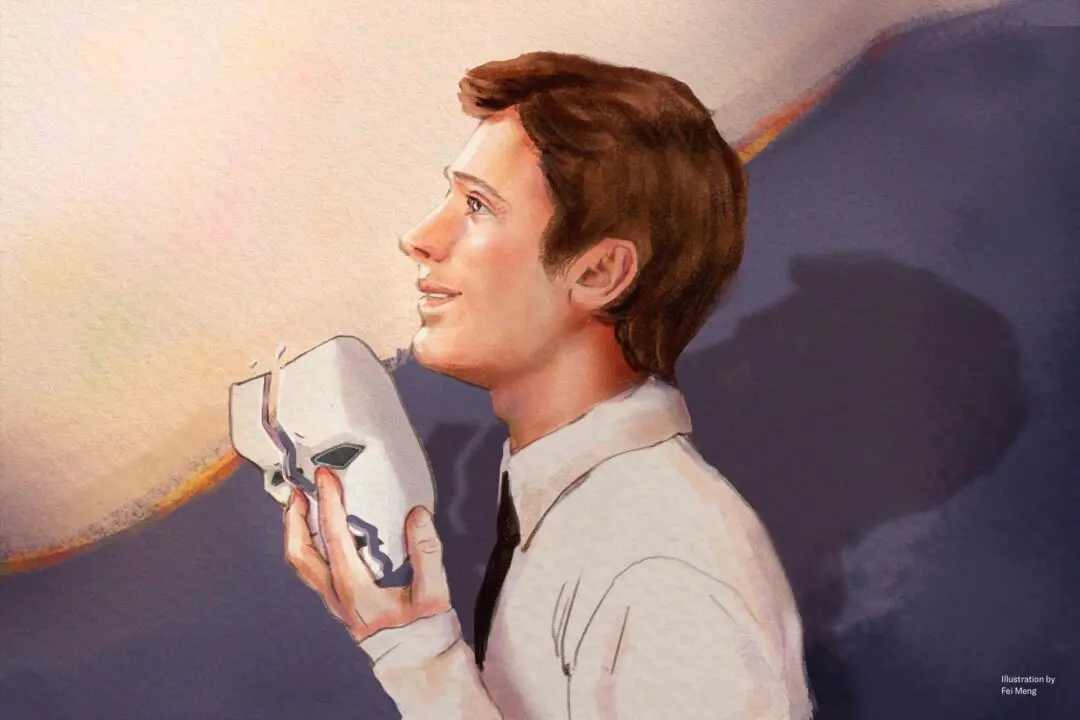President Joe Biden was confirmed to be infected with COVID-19 on July 21, 2022. Biden had received four doses of vaccine, but why is he still infected with BA.5?
Just a few days after his initial recovery, on July 30 Biden got COVID again: White House doctor Kevin O’Connor said that it was a Paxlovid rebound case. Why doesn’t the current antiviral drug work on Biden?
What makes his BA.5 infection so difficult to cure?
Is there any other efficacious treatment modality?
18 Times More Infectious
What Biden has been infected with is BA.5, the variant causing a new wave of infections in the United States.Soon after the global spread of Omicron in early 2022, three different variants emerged, including BA.1, BA.2 and BA.3. Japanese virologists have suggested that BA.2 qualified to be termed as a new virus given its significant differences. However, since BA.2 is considered a variant of BA.1, it is still seen as part of the Omicron family.
A Japanese study indicated that the Re value (effective reproduction number) of BA.4 and BA.5 is 1.2 times higher than that of BA.2. The effective reproduction number represents viral transmissibility. Currently, BA.4 and BA.5 have rapidly replaced BA.2 globally.
BA.4 and BA.5 are 18.3 times more infectious than BA.2, and are currently the variants with the fastest increasing transmission rate.


In animal experiments, Japanese researchers found that BA.4 and BA.5 may also have higher pathogenicity than BA.2.
Researchers analyzed the right lungs of BA.2-infected and BA.4- and BA.5-infected hamsters respectively, and performed histopathological analysis. They discovered that inflammation, hemorrhage, congestion, and alveolar damage were significantly higher in the lungs of BA.4 and BA.5-infected hamsters than in BA.2-infected ones.
Biden Got Infected Despite 4 Vaccine Doses, Maybe Due to 2 Major Reasons
There are two possible reasons why Biden was still infected despite having received four doses of COVID vaccines.- The vaccine’s decreased protection against BA.5

In the preprinted study from the University of Tokyo, the peripheral blood sera from 16 convalescent patients who have had BA.1 breakthrough infection after 2 or 3 doses of vaccine were tested for the binding affinity with different Omicron variants.
It was found that their serum neutralizing antibody titers with BA.4 and BA.5 in those people with 2-3 doses of COVID-19 jabs and later had a further breakthrough infection by BA.1, were significantly lower than those with BA.2, and had another decrease of 2.3-fold.
The take home message is that receiving full-course vaccination and further being infected with BA.1 doesn’t seem to be helpful in protecting against BA.4 or BA.5.
Many may think that the immunity produced by vaccination plus additional infection can offer a strong protection to people, but this may not be the case for Omicron substrains, which are highly variable.
Others argue that although the vaccines have lost their role in preventing infection, they still have some effect in preventing severe illness. However, many experts do not think that the existing “severe illness prevention rate” justifies vaccination, especially for young people and children.
Due to the very different physical conditions of the people receiving the vaccines, many otherwise healthy young people have developed myocarditis, neuritis, cerebral thrombosis, and even disability after vaccination. Therefore, the benefit and risk assessment of COVID-19 vaccination must be individualized and cannot simply be implemented on a large scale for all people.
The risk-benefit assessment of drug usage in patients is easier to be positive; benefits weigh over risks, because the effect data of patients in phase III clinical trials typically exceeds the incidence and severity grade of adverse reactions in patients.
However the benefit-risk assessment of vaccines is a very different concept as compared to drugs.
Because vaccines are for normal healthy people, and healthy people are a heterogeneous population, it is difficult to make a one-size-fits-all approach, and the data from one group is difficult to be generalized, as the basic physical states of different groups of people can be completely different.
For example, young people who are in good health usually do not get sick, they have normal immunity, and will not catch COVID-19. But if they get vaccinated, they could get myocarditis, neuritis or even a lasting disability, or cerebral thrombosis, and their health for the rest of their lives would be over. The risk is way higher than the benefits, as common sense.
Therefore, the benefit and risk assessment of vaccines must vary from person to person, and individual differences are very large.
Accordingly, it is strongly advisable that COVID-19 vaccination program can’t be forced, can’t be absolute, can’t be one-size-fits-all. Something considered beneficial or harmless for one, could be for others harmful, detrimental, and even life-threatening.
- Insufficient natural immunity
At this point, people need stronger natural immunity to fight off the virus’s invasion.
The natural immunity of the human body is non-specific, and it is effective in eliminating all viruses. For instance, in the image below, natural immunity is “O”, which can fight against all viruses such as “A, F, X, and Y”.
Vaccination is used to strengthen the body’s immunity against a certain type of virus. For example, it trains the immune system to produce a large number of specific antibodies to fight virus type X only. However, the biased specific immunity would have no effect on other types of viruses other than X.
Here is an analogy. In school, the students are taught to prepare for exams. If the teacher teaches a pupil: 1+1=2. “Do it 100 times, 1+1 equals 2.” He remembers it firmly. But the exam test asks: 2+3=?. “Sorry, I don’t know, nobody taught me how to do 2+3.”
The essence of teaching is not to repeat the same math problem for a number of times. The key is to train one’s self ability to respond to any question of this type, in this case, addition.
It’s just like the saying: give a man a fish and he’ll be hungry again tomorrow; teach a man to fish and you feed him for a lifetime.
The principle of COVID-19 vaccination is like giving people a fish directly (antibodies), which is of course resolving the starving person’s hunger, but after the fish is eaten up (the antibodies will disappear eventually), and then there are no more fish anymore.
Boosting Your Own Immunity Is Like Learning ‘How to Fish’
In addition to vaccines, it is important for people to strengthen their natural immunity as the best way to resist the rapid mutation and spread of viruses.Everyone has an innate antiviral Navy SEAL force (including interferons, natural killers, macrophages, etc.) inside our body acting as our natural defense system, which is much stronger than Paxlovid.
Paxlovid is like a single external soldier. It is not a miraculous pill, and would still rely on the proper functioning of our innate system as a precondition to allow it to work.
In other words, if our own antiviral immunity does not work properly, an external helper wouldn’t help either. That is most likely one of the key reasons Biden experienced a “Paxlovid rebound.”
Interferons are a key component of natural immunity and are the first line of defense against viral infections. They help our frontline cells in the respiratory tract to enter into an antiviral status. But how?
Type I and III interferons (IFN) are antiviral, while Type II interferons are antiviral and can also fight against bacteria, protozoa, and parasites.
Furthermore, interferons also help reduce severe illness. The higher the expression level of interferon during early infection, the lower the rate of severe illness.
Monthly Forest Hikes Enhance the Body’s ‘Natural Vaccine’
Boosting the body’s natural immune system protects us from all kinds of viral infections over time. So, how can we boost our natural immunity?A healthy diet, sufficient sleep, and an altruistic mindset can all help enhance our own ability to produce interferons and strengthen our ability to fight off viruses. In addition, there are more ways to enhance the body’s “natural immunity” for both young and old.
For instance, every once in a while, you can go for a hike in the forest.

In a 2015 study published in the journal PLOS ONE, obese mice were infected with influenza A virus, and the researchers found that exercise increased the level of expression of the type I interferons in the mice’s lungs, increased antiviral capacity, and reduced the severity of influenza A virus infection in obese mice.

Exercising in the forest brings additional health benefits.
The beneficial effects on natural killer cells of a forest trip of two nights and three days can last for more than a week and up to a month.


There is close Interaction between Type I IFN and NK cells to ensure effective protection from viral infection.
In the early stage of infection, Type I IFN stimulates the production of IFN-gamma of NK cells, and the direct effect of IFN-gamma produced by NK cells will play a comprehensive antiviral role. In the late stage of infection, the production of IFN-gamma is reduced, but the cytotoxic function of NK cells is increased, which exerts an antiviral effect through direct killing.
Meditative Practice Offers Powerful Healing for Immunity
There is a large-scale genomic study revealing robust activation of the immune system following an advanced Inner Engineering meditation retreat.The scientists found the response to oxidative stress, detoxification, and cell cycle regulation pathways were down-regulated after meditation.

Strikingly, 220 genes directly associated with immune response, including 68 genes related to interferon signaling, were up-regulated, with no significant expression changes in the inflammatory genes. This robust meditation-specific immune response network is significantly dysregulated in multiple sclerosis and severe COVID-19 patients.
No matter how many doses of vaccines are given or how many antiviral drugs are dosed, they’re only a single type of measure to prevent viruses or a type of external helper to eradicate the virus.
However, all of us have an innate God-given, powerful system to fight against all different types of viruses and mutants. If we maintain them well with adequate protection, they will work for us day and night.
As we learn more and more about the human body’s miraculous mechanisms for fighting viruses, we learn more about how to boost our natural immunity.






